Oura Ring 4 review: Smarter, more refined, and still the best in health tracking
The Oura Ring 4 raised the bar once again for smart rings

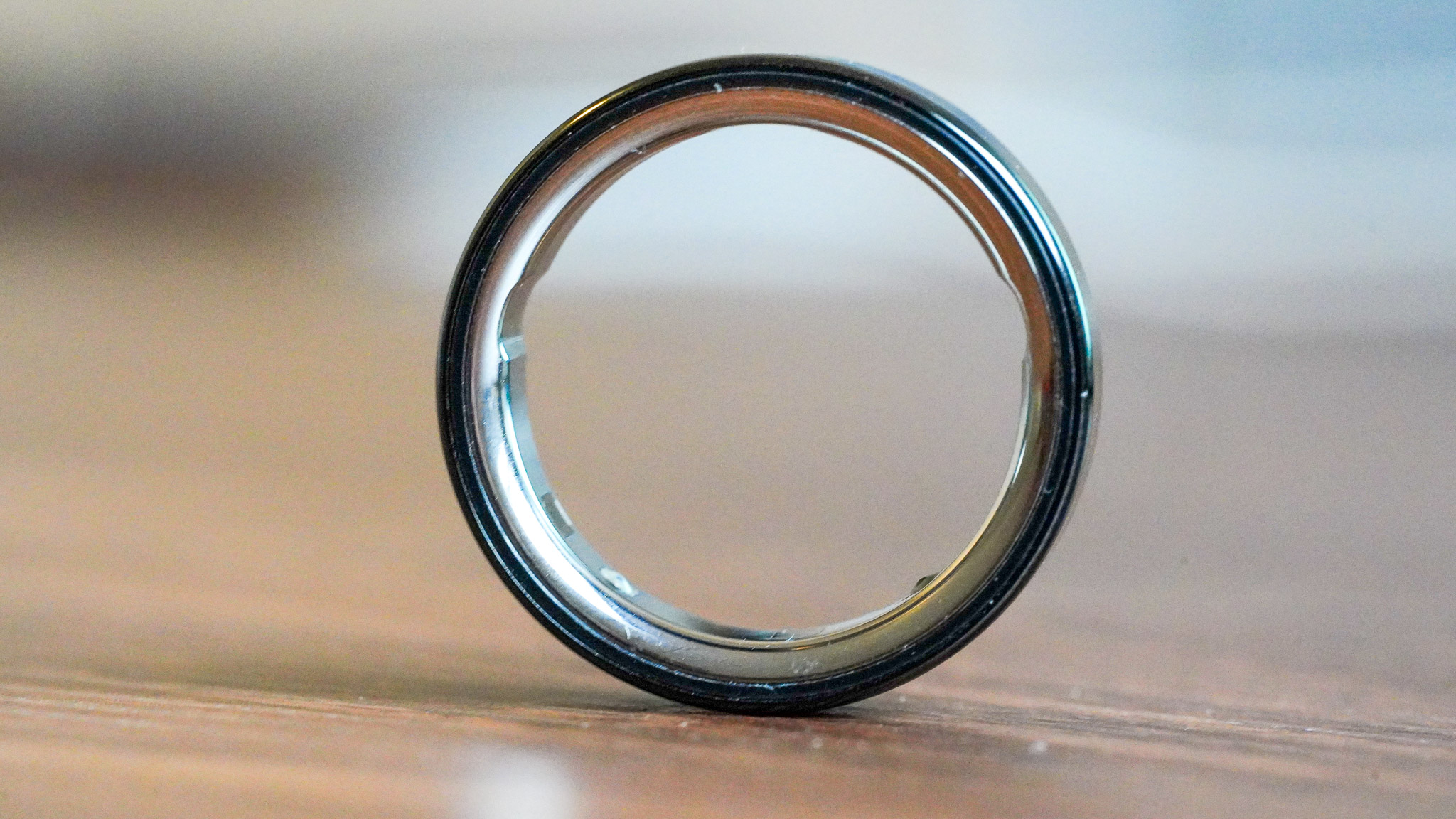
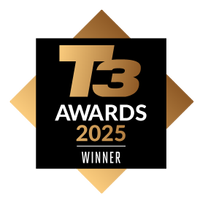
The Oura Ring 4 refines what made its predecessor great, offering smarter sensing, improved battery life, and more accurate health tracking. Its sleek titanium design feels premium, though orientation can be tricky. While pricier than competitors, it remains the top choice for anyone seeking advanced health insights in a smart ring.
-
+
Advanced health and sleep tracking
-
+
Smart Sensing offers improved accuracy
-
+
Sleek, lightweight titanium design
-
+
Extended battery life
-
-
Orientation can be tricky
-
-
Limited fitness tracking compared to sports watches
Why you can trust T3

The arrival of the Oura Ring 4 has long been rumoured. Not least because its predecessor, the Oura Ring Gen 3, has been out for years. It seemed the company wasn’t in a rush to update its hardware; after all, the brand was growing steadily without a new wearable.
Oura’s approach changed this year. Whereas before, they pretty much only relied on word-of-mouth advertising to spread the word, 2024 ushered in some changes. The competition is heating up due to big-ticket brands like Samsung entering the market. Plus, affordable competitors such as RingConn and Ultrahuman are gathering tracking, too.
I don’t think Oura is in danger, though. The Ring 4 and the app update show that the brand knows what it needs to do to stay ahead of the competition. There is only so much you can do to redesign a smart ring physically, but Oura certainly did everything it could to make the new wearable feel fresh.
The all-titanium body and new smart sensing platform, extended battery life and other updates ensure the Oura Ring 4 will stay the number one choice for discerning users despite the subscription costs. Is the Oura Ring 4 the best smart ring for you? Read my full review below to find out.
Oura Ring 4 review
Price and availability
The Oura Ring 4 was announced in October 2024 and is available to buy now directly from Oura. The recommended price differs based on the colourway. The Silver and Black colours retail for £349/ $349/ AU$569.
The Brushed Silver and Stealth colours are a little bit more at £399/ $399/ AU$649, and you’ll have to fork out the most amount of money for the Gold and Rose Gold rings, which cost £499/ $499/ AU$799. Apart from the finish, all rings are the same.
Specifications
- Materials: Titanium
- Water resistance: up to 100m/ 328 ft.
- Width: 7.9mm
- Thickness: 2.8mm
- Weight: 3.3 to 5.2 grams
- Available sizes: 4-15
- Battery life: up to 8 days
- Charging (0-100%): 80 minutes
- Connectivity: Bluetooth Low-Energy
- Compatibility: works with Android and iOS smartphones
Design and materials
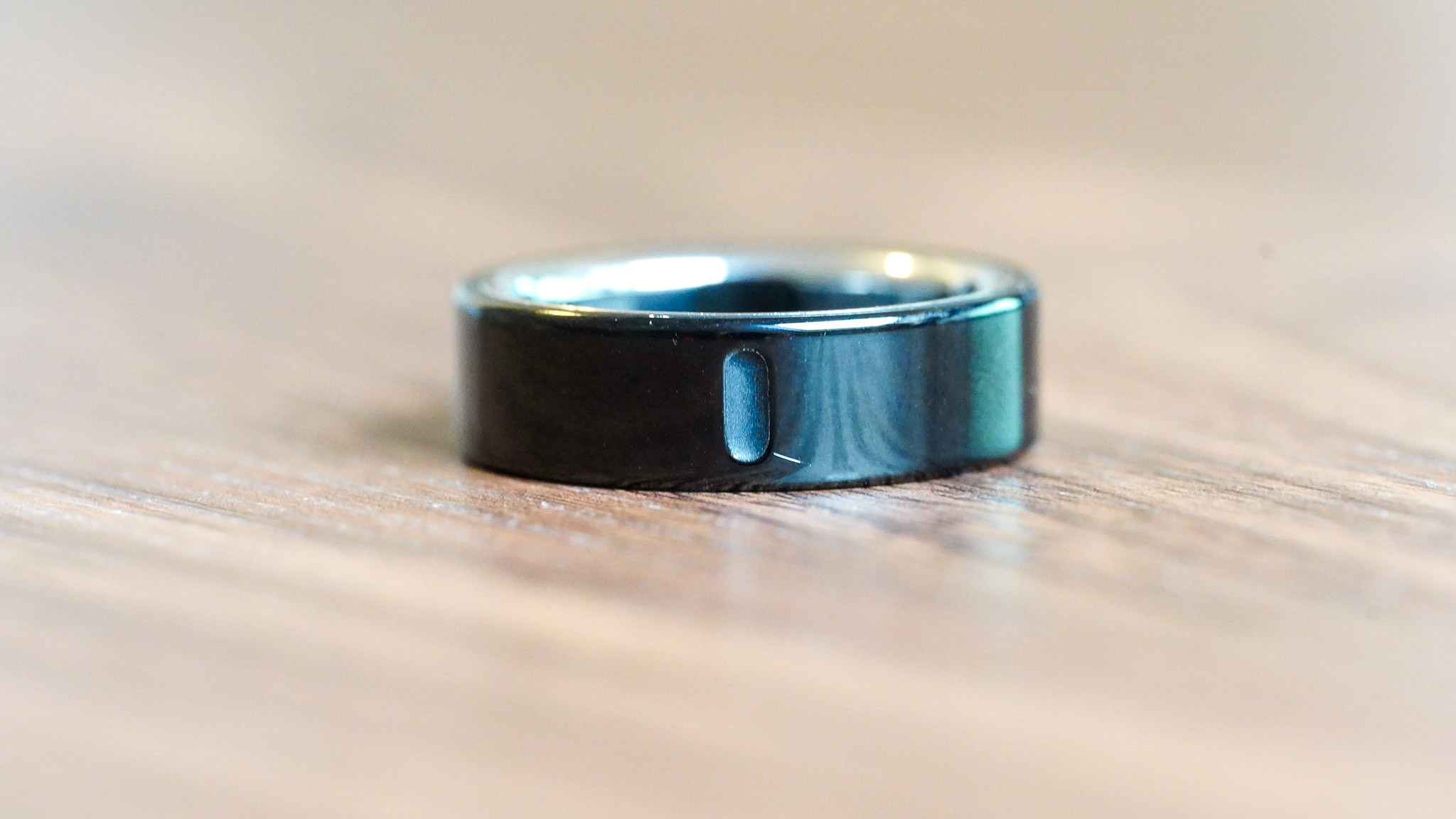
There is only so much you can do to make a smart ring different from one another. They don’t have screens, straps, or buttons, and most people want thinner and lighter wearables, which further restrains the design.
Get all the latest news, reviews, deals and buying guides on gorgeous tech, home and active products from the T3 experts
That said, Oura did an excellent job making the Ring 4 feel different. They removed the epoxy inner layer of the ring alongside the bumps that covered the sensors. The new ring is all titanium and smooth as butter on the inside, which, interestingly, makes it harder to determine if it’s in the correct position.
The ring isn’t slimmer but lighter than it used to be. It comes in more sizes, too: the Gen 3 comes in sizes 6-13, while the Ring 4 can be bought in sizes 4-15. I looked at the new sizes, and I can’t imagine anyone having a size four index finger, but again, my hands are quite big, and I wear a size 12.
Almost all ring versions have a PVD (physical vapour deposition) finish, apart from the Stealth colourway, which has a DLC(diamond-like carbon) coating. I opted for the revamped, glossy Black colourway, and apart from a single blemish, it looks like new. That one little mark, located next to the dimple, is only visible if you’re really looking.
Sensors
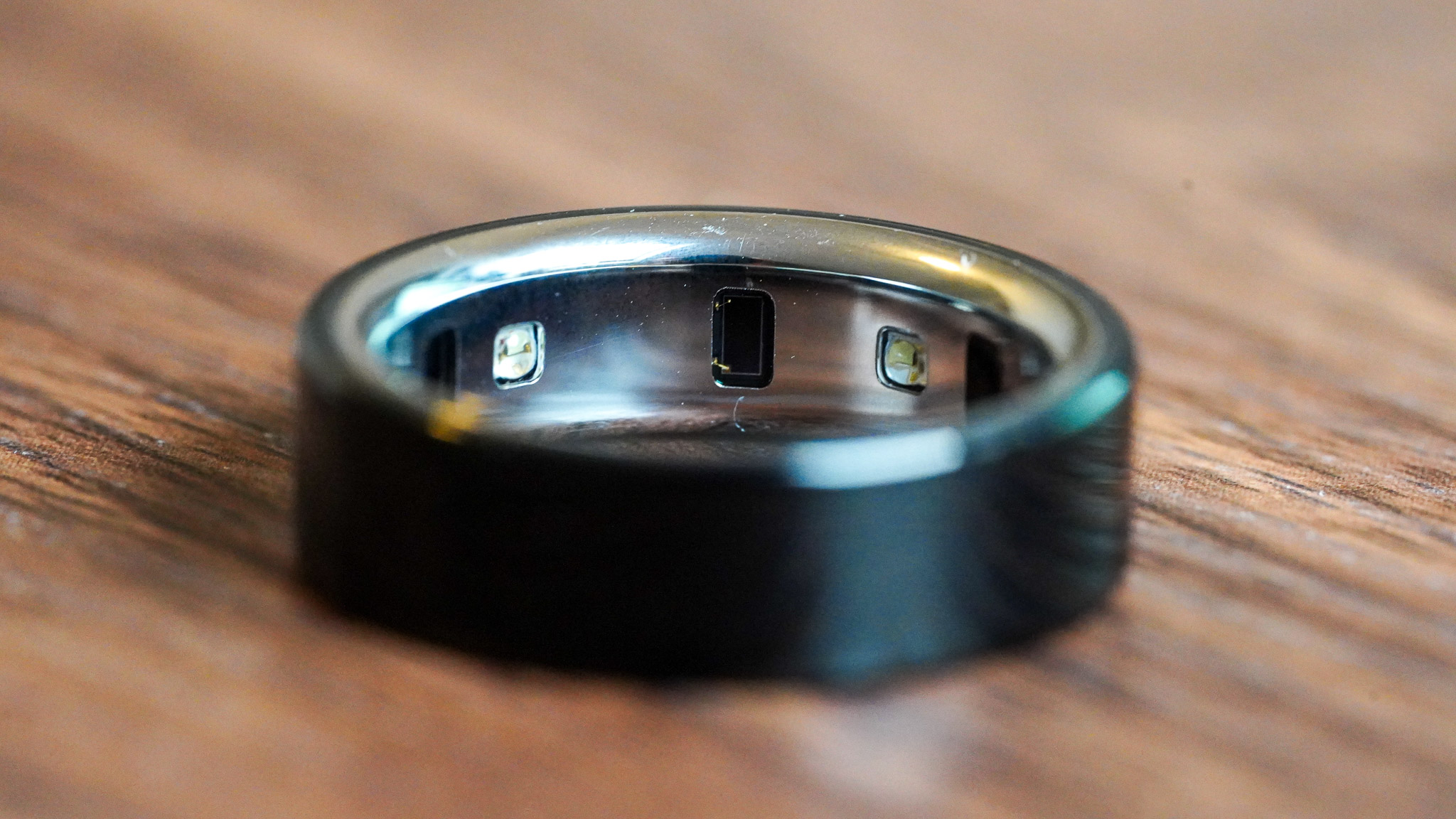
The Oura Ring Gen 4 has more or less the same sensors as its predecessor. I’m not sure if the sensors are exactly the same, but they track the same health metrics.
The red and infrared LEDs measure blood oxygen levels while you sleep, while the green and infrared LEDs alternate to measure heart rate and heart rate variability 24/7 and respiration rate during your sleep. The ring also has a digital sensor to measure skin temperature variations and an accelerometer that tracks movement and activity all day.
The big deal isn’t the sensors but how they can keep track of your vitals. One of the biggest updates to the Oura Ring 4 is the new Smart Sensing platform. Now boasting 18 signal pathways—more than double the eight pathways the Gen 3 used—the Ring 4 promises greater accuracy, even if the ring rotates up to 30% on your finger.
Not all pathways are always active; instead, the Oura Ring 4 uses AI to determine which pathways are needed for maximum data accuracy at any given time. This optimises processing power and reduces battery consumption. Nifty eh?
Most intriguingly, not only does this new system not compromise accuracy, but it also enhances it. According to Oura and based on a research study conducted by an external sleep clinic in August 2024, Smart Sensing led to a 15% improvement in breathing disturbance (BDI) accuracy, a 7% reduction in daytime heart rate gaps, and a 31% reduction in nighttime heart rate gaps compared to Oura Ring Gen 3.
Health and fitness tracking
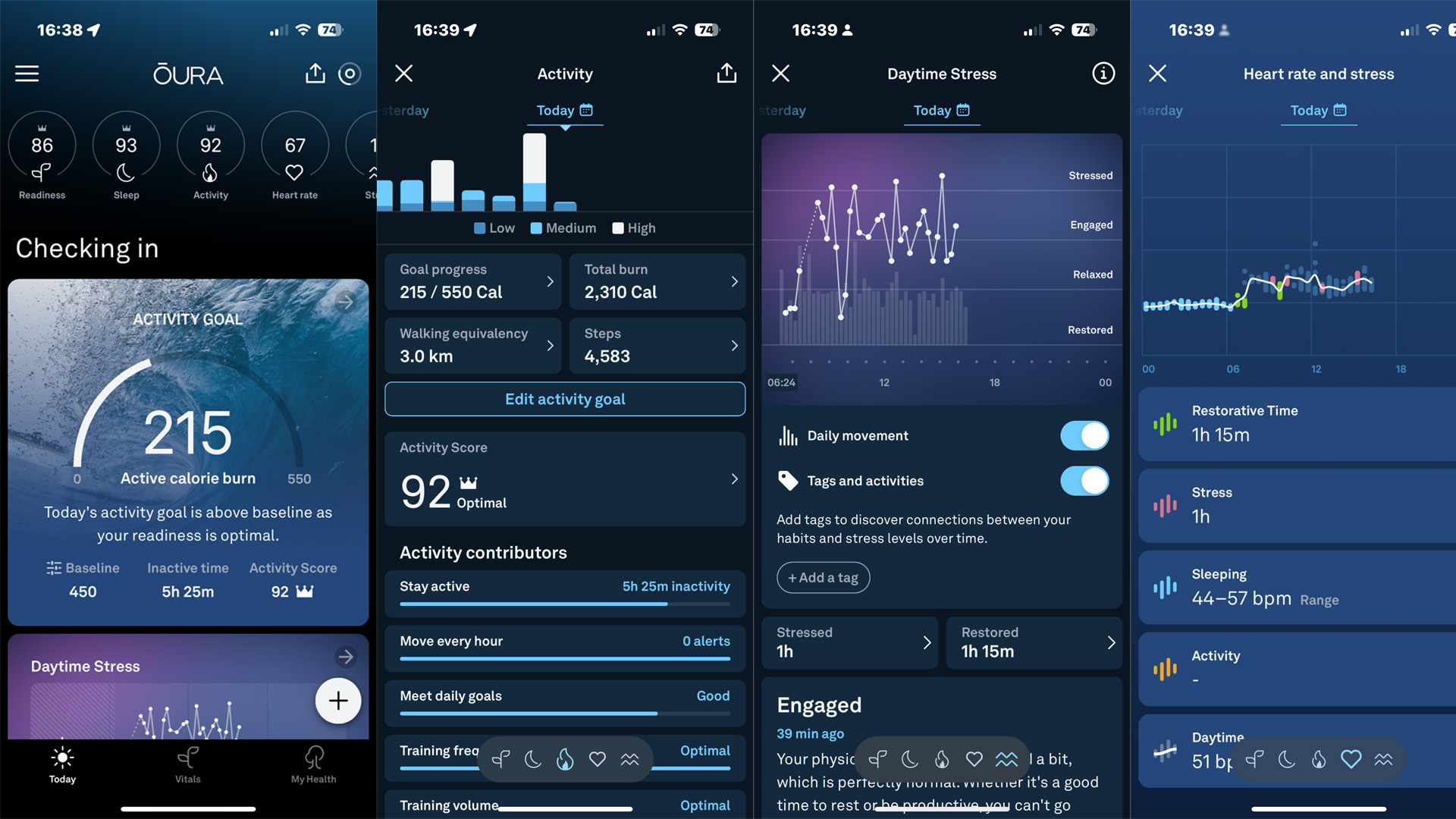
I have been perfectly happy with the sleep and automatic activity tracking of the Oura Ring Gen 3, so I was curious to see how the Ring 4 can improve Oura’s health and fitness tracking.
According to the brand, one of the improvements comes via the new Smart Sensing platform. As mentioned above, the new pathway algorithm allows some rotation without compromising the data.
This is excellent news, as due to the lack of sensor bumps, it became harder to determine how the Ring 4 sits on your finger without looking. The dimple is still there to help you with the orientation, of course, but I found myself looking at the ring more often than before to ensure it’s positioned correctly.
Thankfully, this doesn’t affect data accuracy. If anything, Oura says the Smart Sensing platform reduces gaps in data. I found little to no gaps in my data; the ring seems to be able to track heart rate, sleep and stress almost flawlessly.
I found stress tracking more accurate on the ring 4. Whereas before, the Oura Ring Gen 3 often said I was stressed almost all day with little restorative time, the new ring provides a more balanced view of my overall stress levels.
Simultaneously, my resilience score seems more realistic, too. I often used to be at the bottom end of the exceptional region, whereas these days, it dips in and out of exceptional with more time spent in strong. This feels more realistic and lifelike than spending most of my waking hours stressed yet having superb resilience.
Sleep tracking is as good as it’s always been. I’m a good sleeper (when I sleep in my own bed; I can’t for the life of me sleep on trains/ flights), so my score is always comparatively high. However, the Oura Ring 4 monitors my wake time and different sleep stages efficiently, which is presumably why I’m yet to achieve a 100 sleep score.
Automatic fitness tracking has been improved. Now, the ring can give you heart rate data for over forty exercises. It’s all dandy, but obviously, the Oura Ring 4 doesn’t track anything more advanced than heart rate, so it won’t replace my Garmin watch as my main tracker. However, for those who want to track their exercise passively and don’t need additional information about their gate or power output, the Oura Ring 4 should suffice.
Battery life and charging

The Oura Ring 4 has a longer battery life than the Gen 3 and can last up to eight days on a single charge. This is thanks to the algorithm optimising the LEDs so not all of them fire at the same time.
When I received the Ring 4 to 100% on 30 September, I charged it to 100% and used it continuously until 10 October, when the ring prompted me to put it on the charger, as it only had 12% battery left. Not bad!
Of course, that ‘up to 8 days’ battery life is across all sizes; I wear a size 12 ring, so there is more space for the battery. People with smaller fingers – and, therefore, smaller rings – will see shorter battery life than mine.
The Oura Ring 4 charges in about 80 minutes. It has a new charger, which was necessary as the inner surface of the ring is different than before. The new charger block is bigger but not big enough to bother anyone. It’s not like you’d have to carry it in your pocket or anything.
I’d like to see an Oura charging case similar to the RingConn Smart Ring Gen 2 so I could charge the ring on the go if needed. I’m fine if it’s an optional accessory; we wouldn’t want to flood the market with even more batteries no one uses.
The updated Oura app
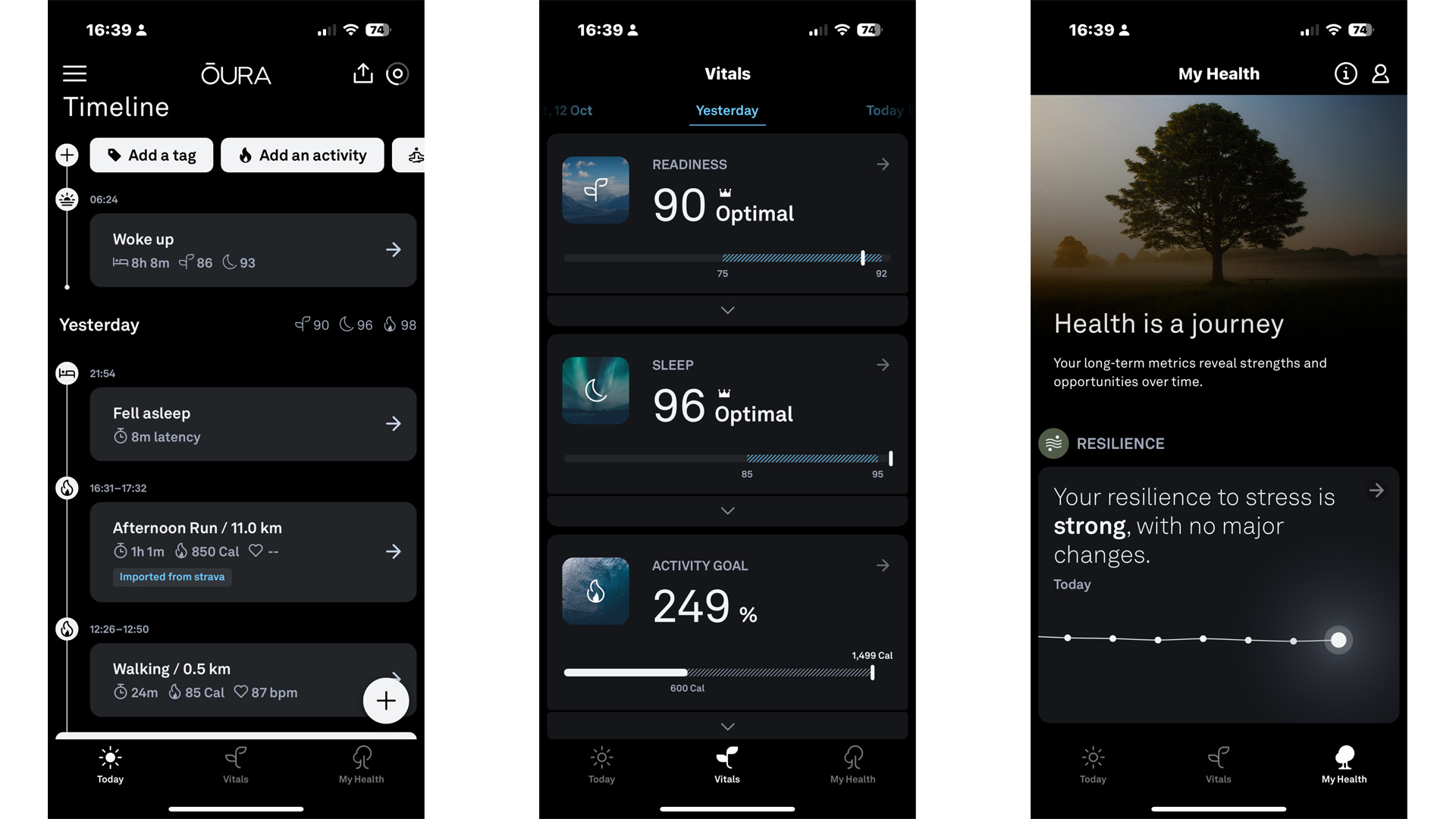
Oura also updated its app, which is good news for all Oura Ring users, not just those with the latest Ring 4. The new homepage looks cleaner, and the data is grouped more clearly. Most of the stats that change daily have been moved to the front, and you also get little summaries of all your stats at the top of the page.
Oura also introduced a timeline similar to other smart rings, like the Ultrahuman Ring Air. Here, you’ll see a breakdown of your activities of the day and the tags you added. Your logged meals and any exercise will also appear here.
The Vitals tab allows a deeper dive into each score, while the My Health tab focuses on long-term trends, including Cardiovascular Age, Cardio Capacity, Stress Resilience, and Sleep Trends.
It’s a nice touch that Oura gives something new to all its users at no additional cost. Sure, the subscription costs money, but you keep getting more and more features added to the roster, and the fee is still the same. Not to mention, it isn’t really a huge amount of money, is it?
Verdict
The Oura Ring Gen 4 goes to show that we don’t need an annual update to our beloved tech gadgets. It’s best if we leave them to run their course and update every now and then so that when the new version comes out, it feels fresher and more substantial.
Instead, it’s important to focus on software enhancements and offering a premium experience that people don’t mind paying the money for. Even before the launch of the new ring and despite the subscription fee, more and more people joined Oura, which is a testament to the company’s approach to fitness and health tracking.
The Oura Ring 4 continues Oura's tradition of offering advanced health and sleep tracking in a sleek, titanium form. With updates like the Smart Sensing platform, improved battery life, and more accurate stress and activity monitoring, it solidifies itself as a leading smart ring. The new design feels more premium, with its smooth, bump-free interior, though this can make orientation trickier.
If you need the best smart ring experience right now, you need the Oura Ring 4. There are cheaper alternatives, and I’m sure even more brands will enter the market soon. However, if Oura keeps doing what it has done so far, it has nothing to be concerned about. If anything, I envision further growth for the company in the near future.
Also consider
Whoop 4.0: A fitness tracker focused on recovery and strain, offering detailed health metrics and insights without a display.
Fitbit Charge 6: A versatile fitness tracker that offers strong health and sleep tracking with a more traditional wristband design.
Apple Watch Series 10: A full-featured smartwatch with comprehensive health tracking, fitness features, and advanced gesture controls.
Garmin Venu 3: A premium smartwatch offering excellent fitness and wellness tracking, especially for athletes and outdoor enthusiasts.
Samsung Galaxy Watch 7: A sleek smartwatch that integrates fitness tracking with extensive health features, such as body composition analysis.

Matt Kollat is a journalist and content creator who works for T3.com and its magazine counterpart as an Active Editor. His areas of expertise include wearables, drones, fitness equipment, nutrition and outdoor gear. He joined T3 in 2019. His byline appears in several publications, including Techradar and Fit&Well, and more. Matt also collaborated with other content creators (e.g. Garage Gym Reviews) and judged many awards, such as the European Specialist Sports Nutrition Alliance's ESSNawards. When he isn't working out, running or cycling, you'll find him roaming the countryside and trying out new podcasting and content creation equipment.